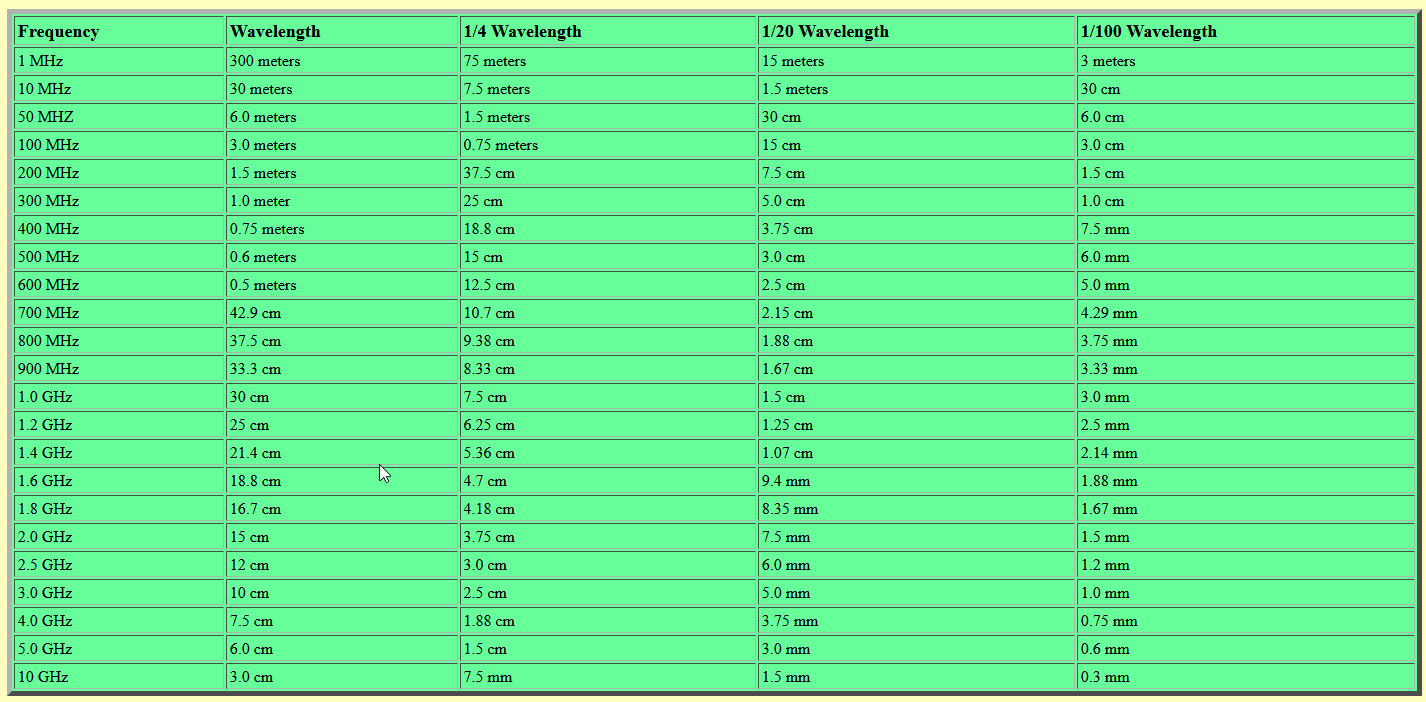To further clarify why borrowing an antenna probably won’t work;
Normal radios like cell phones, wifi, etc. are all “EF” emitters… they emit waves of electrical potential across the electric field. Those types of antennas are simply unshielded conductors, and they are “tuned” to a frequency by adjusting their length to best match a harmonic of the wavelength of the radio frequency being transmitted (or received). That means if you take one 2.4ghz antenna from a wifi router and attach it to another 2.4ghz wifi router, the length of that antenna is correct and you’re good to go. This is where the idea that you could use one 125khz antenna from one reader with another comes from, but sadly it’s not correct.
With EF transceivers, length of the emitter (antenna) is what “tunes” it for a specific frequency. Some 2.4ghz antennas are longer or shorter based on the harmonic;
As you can see from the chart above, 2.5ghz has a full wavelength of 12cm, which is about the length that most “rubber ducky” antennas hanging off the backs of wifi routers are… but sometimes you see shorter “stubby” antennas, which are going to be a “harmonic” of the full wavelength… usually 1/2 or 50% wavelength, or 6cm.
Anyway, the point is, EF transmissions are all about electric field potentials. That is not how magnetically coupled devices like passive RFID transponders work at all. In fact, the only reason we use the term “antenna” to describe what are essentially two inductor coils (one used by the reader and one for the transponder) is that they happen to be moving both power and data across a shared magnetic field. Normally when you are placing two inductors near each other in order to move power alone, it’s called a transformer.
To get an inductor “tuned” to a specific frequency, you are basically building a L/C circuit that resonates at your target frequency. In an LC circuit, your inductor (L) has an inductance value which must coordinate with your capacitor ( C ) in order to resonate at a specific frequency. So, you can have basically a nearly infinite number of combinations of L values and C values that all resonate at 125khz. The lower your C value, the higher your L value must be to maintain 125khz tuning. Because it requires two values to match in a specific way, there is absolutely no guarantee that the C value used by the access controller (which dictates exactly what L value the “antenna” must have) will match the C value of your proxmark3… and if your proxmark3 has a different C value, then the L value required to resonate at 125khz will not match the L value of the antenna from the access controller.
Does that make sense?
